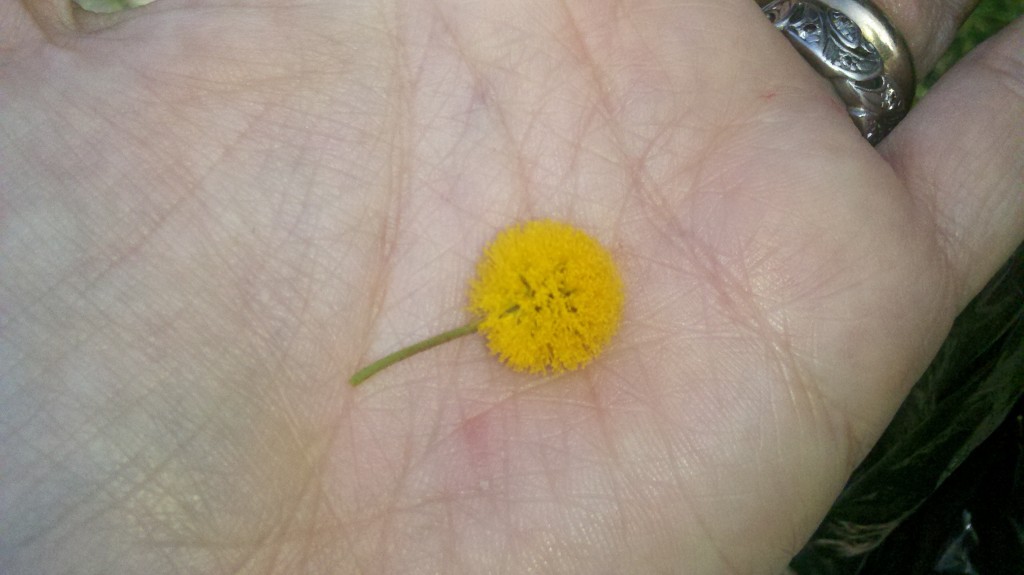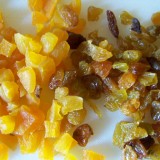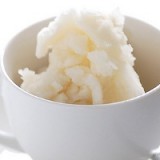A Little Tenderness: L’Artisan Mimosa Pour Moi
I recently received an email from a reader who told me that though she loves reading about about perfume, it seems like “there isn’t a scent pale enough in the world” for her. She’s hardly the only person I’ve met looking for a gentle, pastel sort of perfume. Sometimes I think the shy perfume-curious people who make their way up to the counter and ask for something “clean” or “natural” really mean they want something that won’t make them feel smothered or overwhelmed. Often, they end up with something scrubbed so thoroughly it’s gone thin and limp–or worse, brash and soapy. It doesn’t have to be that way.
It took me a long time to appreciate tenderness in perfume, but when I did it was a revelation that went far beyond scent. Near the end of Coming to My Senses, I describe walking across Central Park in early spring from the West Side, where I’ve been staying with a friend, to the East Side, where the museums and the fancy department stores are. Once there I visit a perfume boutique. Before I can stop her, the sales assistant sprays a blotter with a perfume I don’t think I care for and offers it to me. Out of politeness, I take it, and sniff…
The boutique was L’Artisan’s 84th and Madison location (now sadly closed) and the perfume (happily, still with us*) was Mimosa Pour Moi. I’d always thought of it as a wan little thing, a puff of scent that went by too quickly and quietly for me to care about it. But on that day in early spring, with flower buds just beginning to unfurl on the bare black branches of the trees and my own heart more open than it had been in years Mimosa Pour Moi made perfect, beautiful sense.
Reviewers, including Luca Turin and Tania Sanchez in Perfumes: The Guide, often note that while Mimosa Pour Moi opens with a true-to-life mimosa note, it quickly fades to a disappointing watery violet. It’s a fair description, and I too was disappointed until this spring when the Acacia Farnesiana trees1 in my neighborhood went into riotous bloom. The thorny branches I cut and brought inside had a heady, honeyed scent with a funk under a dusty almond powder that made the whole far richer than Mimosa Pour Moi–and not far from the symphonic beauty of the old versions of Caron’s Farnesiana or the dirty magic of Frederic Malle’s Fleur de Cassie.
But the way those trees smelled outside, from across the road or the creek or just wafting by on a passing breeze? That scent was just exactly the scent of Mimosa Pour Moi–the powdery, almost gritty sweetness giving way to the fresh spring green of cucumber peels and rainy violets–the whole of it transparent, ephemeral, and tender as a single fluffy yellow bloom in the palm of your hand.
Image: My own photo. If you’d like to use it please credit and link back.
1 I remain puzzled by the relationship of cassie, mimosa and acacia in European perfumery, please do comment if you can clarify. My not-so-in-depth research suggests that the Acacia Farnesiana, which originated in the New World, became commonly known as a Mimosa or Cassie Tree in Europe and that the three terms are used more or less interchangeably when naming perfumes. (In the Southern U.S. the tree commonly called a Mimosa is a fragrant Dr. Seuss looking thing also called a Silk Tree, while in Texas–and probably Mexicao–the Acacia is widely known as a Huisache tree.) However, Fleur de Cassie lists both mimosa and cassie as notes, so perhaps there’s a difference in the traditional means of processing, as there is for the flowers of the bitter orange tree.
On my recent trip to Enfleurage both cassie and mimosa essences were available for sniffing, which may or may not have anything to do with perfumery. The cassie was derived from Acacia Farnesiana, while the mimosa was derived from Mimosa Pudica, the Silk Tree I just mentioned above, also knowns as the Touch-Me-Not or Sensitive Plant. The mimosa smelled gorgeously dirty, the cassie was a delicious cucumbery thing–the exact opposite of the way they are treated in Fleur de Cassie.



















10/23/2012 at 5:30 am
I am at a loss for words at seeing someone actually wanting a pale scent. Really? I suppose they work on some people but on me they are gone in sixty seconds. Anyway, mimosa confuses me too because like you I’ve seen a few different things called mimosa. Granted, I like all of them but it does make you wonder which plant they mean when you see it listed as just mimosa. That image of spring you wrote about seems so far away now as we head into winter. It’s nice to have a little bit of spring bottled up to use when you need a lift on dreary days.
10/23/2012 at 8:45 am
Well, even though I love reveling in a rich perfume, I do understand the feeling of being overwhelmed by scent, or feeling like I can’t smell past the perfume to the world around me. And I’ve never minded ephemerality in perfumes as long as it’s pretty enough to make me want to reapply. Mimosa Pour Moi does that. On a fall day or in summer, when the colors and smells are rich, it gets completely lost. But on those cold, bare days in winter or very early spring it’s just perfect.
10/23/2012 at 4:29 pm
Oh I like the softer scents but they don’t like me. If I spritz one on its almost gone by the time I walk downstairs. Skin chemistry I guess. There are a lot of beautiful ones but I can’t wear them. Well, I can, but they are far too fleeting.
10/25/2012 at 3:18 pm
Oh, that’s too bad. Have you ever tried rubbing some oil or unscented moisturizer into your skin before applying? That often does the trick. Also, spraying at the nape of your neck where the oils in your hair can hang on to the scent. (Or in cleavage, if you have some. :-))
10/23/2012 at 7:44 am
Here I stand ready to make up for everyone who under-appreciates what I consider subtly (not having tried this perfume yet) but in the attempt, feel it was made for people like me. As a natural perfumer by trade I am interested in exploring the world of synthetics largely because of you Alyssa! Most synthetics hit me over the head like a sledge hammer (have to be honest) and I am going to make fast tracks to try this one. And I am also looking forward to that ‘watery violet’ *wink*.
Thank you so much for giving me another universe to explore.
10/23/2012 at 8:51 am
It is a truly lovely little thing, Dabney. I’ll be very curious to hear what you think of it!
I must tell you though, I never understand it when people speak of natural perfumes as more gentle or ephemeral. They are definitely less radiant/diffuse, and they don’t cling the way that synthetic musk, especially, does, but some of them have their own power–and the raw essences, my goodness! The blotter I dipped in Davana absolute yesterday scented my journal and my bag and I can still smell it right now, a day later, from the next room.
10/23/2012 at 9:00 am
You are so right Alyssa, it’s not an even line down the middle. I ‘got’ your Botrytis and love it; it’s a bit too sweet for me to wear often but, since ‘sweet’ is considered “heavy & relaxing’ I put it on my pillow when i read in bed in the evenings.(perfume aromathrapy!) On the other hand the Songes is one of those that hits me over the head…i can sense the beautiful notes in there but i would need it diluted to about a tenth.
All this has me wondering if there is a ‘blaring trumpets’ molecule that fits into different people’s receptors..???
10/23/2012 at 9:07 am
That’s so funny, Dabney! I always say that I have “loud trumpets” problems with most of the Bonds, especially in the opening. I know exactly what you mean–it’s a sense of imbalance as much as sheer volume. But I think a lot of it is what you’re accustomed to, and/or looking for: Songes is definitely a large perfume, but most days I find that it narcotic rather than overwhelming–and I blame the naturals in there, especially in the EDP, which has plenty of jasmine. 🙂
I definitely went through a period of adjustment when I first fell for perfume, where I learned to smell past the initial barrage to the structure. That was especially true for the classic/vintage perfumes. And I am still a chronic underapplier–I suppose I dilute by dabbing!
10/23/2012 at 9:23 am
Well i’m certainly not going to give up playing & thanks for your encouragement..i am quite willing to give Songes another chance or two…and i’ll be on the lookout for obnoxious naturals as well. Actually Sweet Birch is very piercing. Here’s to a good time on the path of learning!
10/23/2012 at 9:28 am
Yes! *clink* To learning! I do love that we can have these conversations across the naturals/synthetic divide, Dabney. It’s such a fuzzy line for me, with so much beauty to be found all across the map.
10/23/2012 at 12:17 pm
I did a major sampling this last spring/summer of the heliotrope and mimosa notes (and I can’t help you with the cassie/mimosa/acacia trifecta. I kept getting confused on how heliotrope and mimosa were used interchangeably in the Guide, although my nose has sorted those out now) and by far my fave mimosa was Mimosa pour Moi. Light florals and I usually don’t get along because of my skin chemistry, and in mimosa’s case everything started smelling like shampoo, so this was a happy, happy find. I love my intellectual irises and brooding incenses, but sometimes I find myself craving something happy. MpM is “YAY! It’s Spring!” in a bottle.
10/23/2012 at 12:29 pm
Oh gosh, I don’t think of mimosa and heliotrope as the same at all, although I guess they do have that ethereal almond note in common. Mysteries never cease when it comes to perfume… I hear you on the shampoo. Pear and apple notes are often like that for me. So glad this one worked for you. What are some of the others you tried?
10/23/2012 at 1:16 pm
…going back and checking my notes….. Mimosaique, AG’s Le Mimosa, L’Occitane’s Mimosa, Champs-Elysee, SMN Gaggia, Cinema, Molinard Mimosa, Angela Flander’s Mimosa, Fleur de Cassie, Farnesiana, Calypso Christian Celle Mimosa and Demeter Naturals Mimosa. (When I examine a note, I REALLY examine a note.)
10/25/2012 at 3:17 pm
That is a fantastic list!